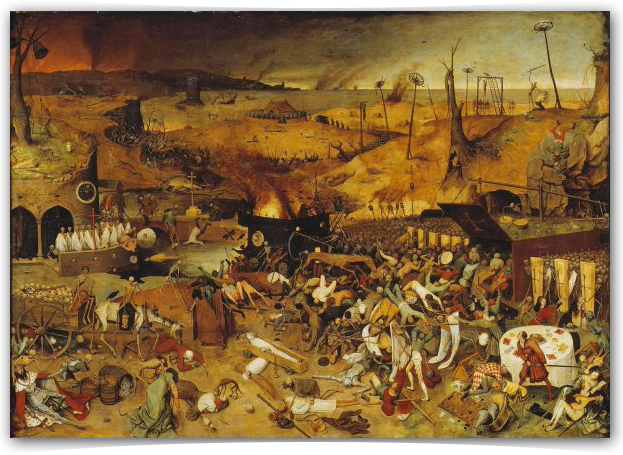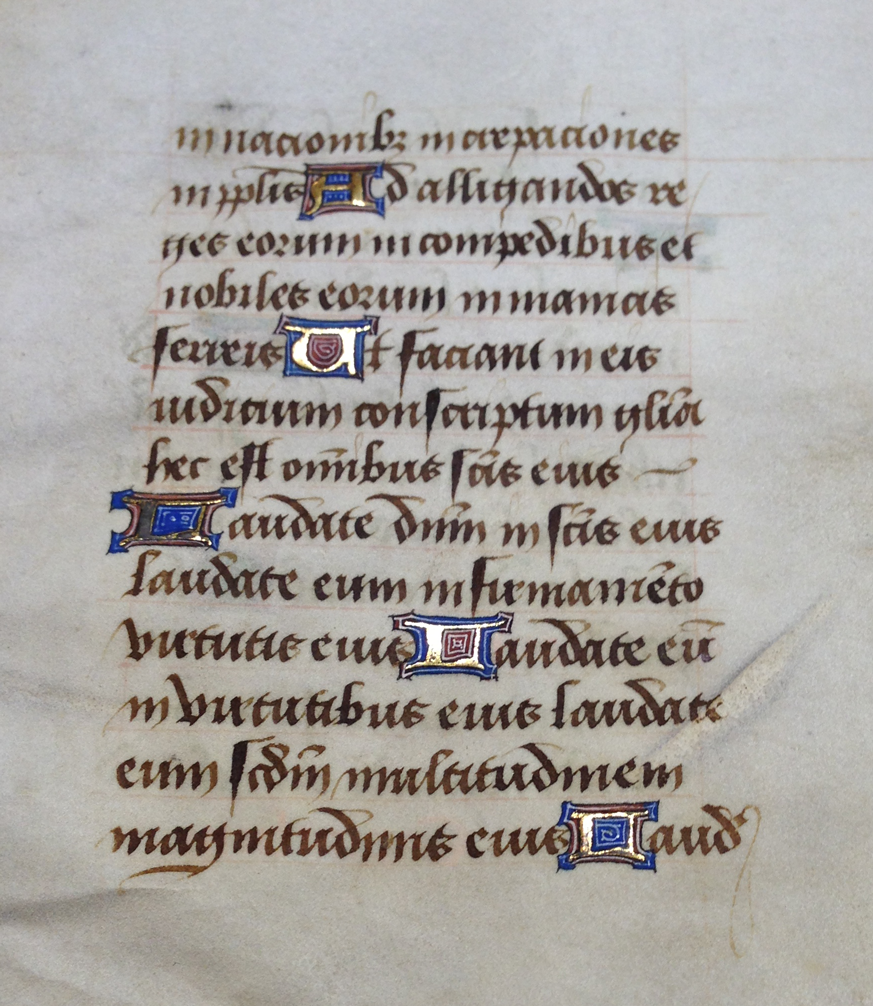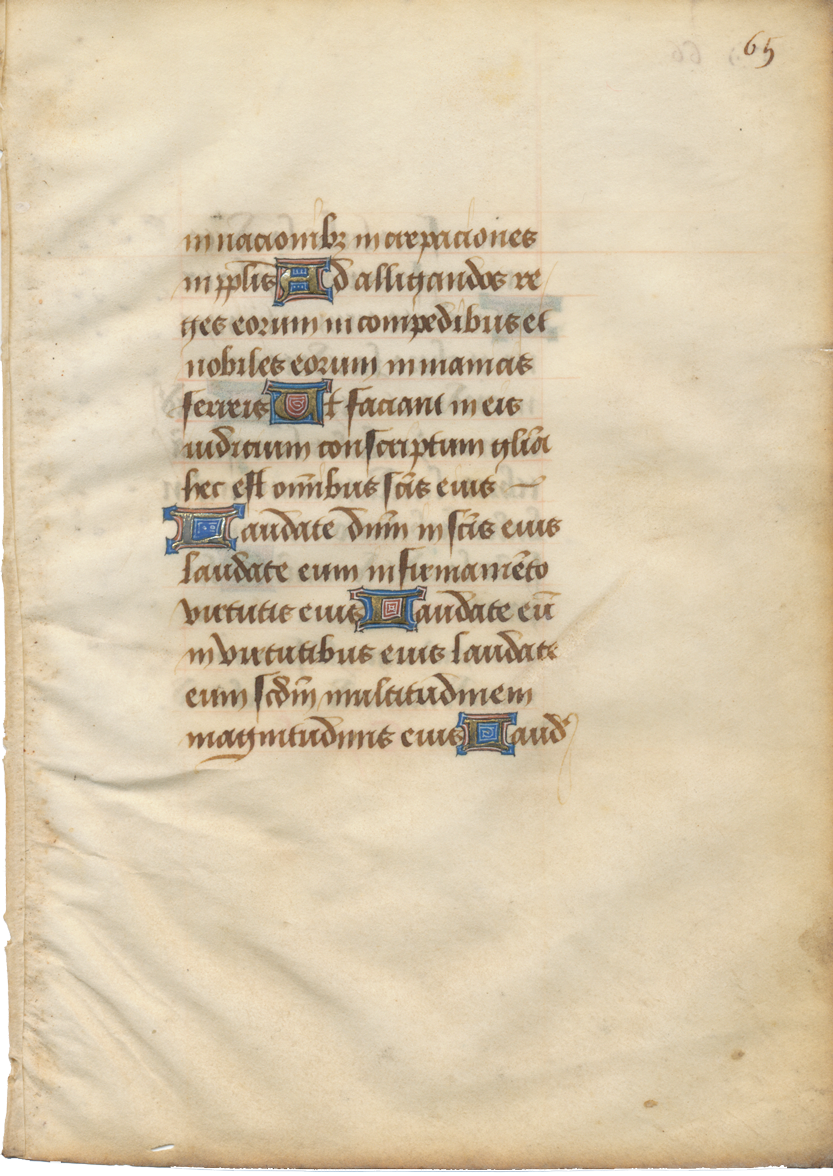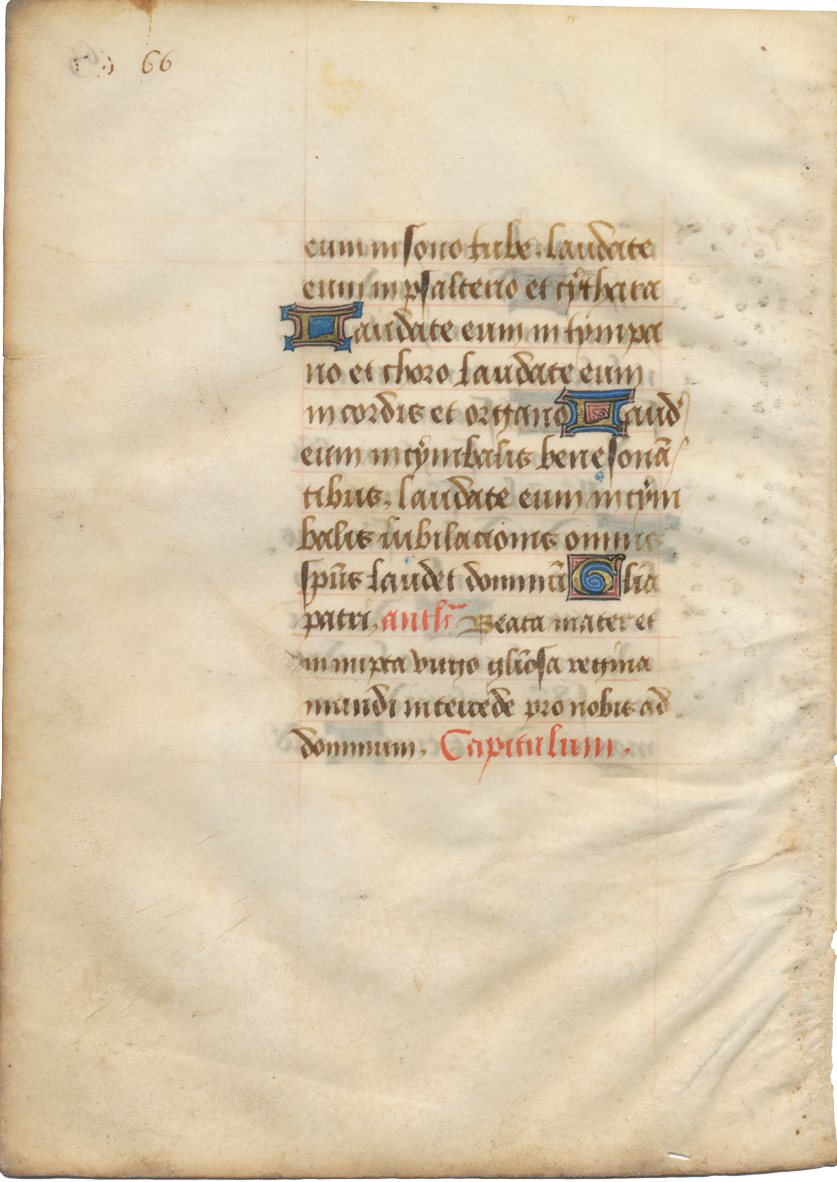Anonymous
Anonymous
14th Century Illuminated Leaf from Book of Hours - 1350
From Flanders circa 1350 comes this stunning illuminated miniature leaf on virgin vellum from a 14th-century Book of Hours, in pristine condition. Thirteen lines of text on each side featuring eight gilded letters, written in Gothic Latin script with brown ink and flawless burnished gold initials. Leaf measures 6.5″ x 4.5″ (15.5mm x 11.4mm) with the written space at 3″ x 2″ (7.6mm x 5mm).
In the 14th century the Book of Hours overtook the Psalter as the most common vehicle for lavish illumination. This partly reflected the increasing dominance of illumination both commissioned and executed by laymen rather than monastic clergy. From the late 14th century a number of royal figures began to collect luxury illuminated manuscripts for their decorations, a fashion that spread across Europe from the Valois courts of France and the Burgundy, as well as Prague under Charles IV, Holy Roman Emperor and later Wenceslaus. A generation later, Duke Philip the Good of Burgundy was the most important collector of manuscripts, with several of his circle also collecting. It was during this period that Flanders overtook Paris as the leading force in illumination, a position it retained until the terminal decline of the illuminated manuscript in the early 16th century.
The application of gold leaf or dust to an illumination is a very detailed process that only the most skilled illuminators can undertake and successfully achieve. The first detail an illuminator considered when dealing with gold was whether to use gold leaf or specks of gold that could be applied with a brush. When working with gold leaf the pieces would be hammered and thinned until they were “thinner than the thinnest paper.” The use of this type of leaf allowed for numerous areas of the text to be outlined in gold. Illuminators had to be especially meticulous when applying gold leaf to the manuscript, since the careless implementing of gold could ruin the labor already placed in the illumination, thus causing the entire folio to be discarded. By adding richness and depth to the manuscript, the use of gold in illuminations created pieces of art that are highly valued today.

STEP BACK IN TIME 650 YEARS
Just imagine: As this beautiful leaf was being written by some long-forgotten scribe, the Late Middle Ages were marked by difficulties and calamities such as famine, plague, and war, which significantly diminished the population of Western Europe. In the four years from 1347 through 1350 alone, the Black Death killed approximately a third of the entire European population. Controversy, heresy, and schism within the Church paralleled the warfare between states, civil war within countries, and peasant revolts occurring in various European kingdoms. Cultural and technological developments transformed European society, concluding the Late Middle Ages and beginning the Early Modern period.



